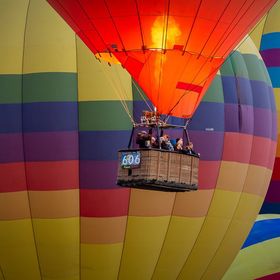65% Illuminated Waxing Gibbous Moon
Black & white edit
ZWO ASI294MC Pro
Celestron C9.25 SCT
Celestron 0.63 Corrector-Reducer
Read more
65% Illuminated Waxing Gibbous Moon
Black & white edit
ZWO ASI294MC Pro
Celestron C9.25 SCT
Celestron 0.63 Corrector-Reducer
05-02-2020 02:34 AM
Read less
Black & white edit
ZWO ASI294MC Pro
Celestron C9.25 SCT
Celestron 0.63 Corrector-Reducer
05-02-2020 02:34 AM
Read less
Views
80
Likes
Awards
Aperture Award
Categories
Same photographer See allBehind The Lens
Discover more photos See all
Behind The Lens
Location
This photo was taken in my front yard in the Annapolis, Maryland, USA.Time
As with a lot of astrophotography, this was taken very early in the morning at 2:34 AM while most people are in asleep bed.Lighting
No external light source is needed when shooting the Moon by itself. It's a bright enough that you generally would stop down your lens and shoot with a low ISO.Equipment
The equipment I used was: Telescope/Lens: Celestron C9.25 SCT Camera: ZWO ASI294MC Pro Optics: Celestron 0.63 Corrector/Reducer Mount/Tripod: EQ6-R ProInspiration
My love for the night sky started at an early age. I remember my dad waking me up to see Halley's comet when I was a kid. I wished I had the ability to take a photo of that experience, but I didn't at the time. Many years later, I have the gear and the time to take images of the night sky and the celestial objects that are both visible and invisible to the naked eye. The Moon is one of those objects that I will never get tired of photographing.Editing
Most lunar, solar or planetary imaging is done by a technique called lucky imaging. This is where images are recorded in video format at a high frame rate. The number of images can vary from a few hundred to many thousands or tens of thousands depending on your target. 2000 frames were taken and the best 25% or 500 frames were stacked to produce this image in AutoStakkert! 3. Some sharpening was done in RegiStax6 and the rest of the editing was done in Photoshop which included some more sharpening and basic exposure post-processing.In my camera bag
This equipment is a little bit different than what I normally have in my bag since this is for astrophotography. I have two telescopes I normally use, a Celestron 9.25" SCT and a William Optics ZenithStar 73. I have a couple different cameras that have cooled sensors for deep space objects and I have a couple of high speed, small sensor cameras for planetary, lunar and solar photography. I have filters for solar photography as well as narrowband/dual-band filters to block out light pollution. Dew heaters are a must for astrophotography as well!Feedback
Learn the fundamentals of astrophotography with what you have. You don't need a telescope to get similar results. Learn the technique of lucky imaging and how to process that technique and you will be surprised with what you can capture.














































